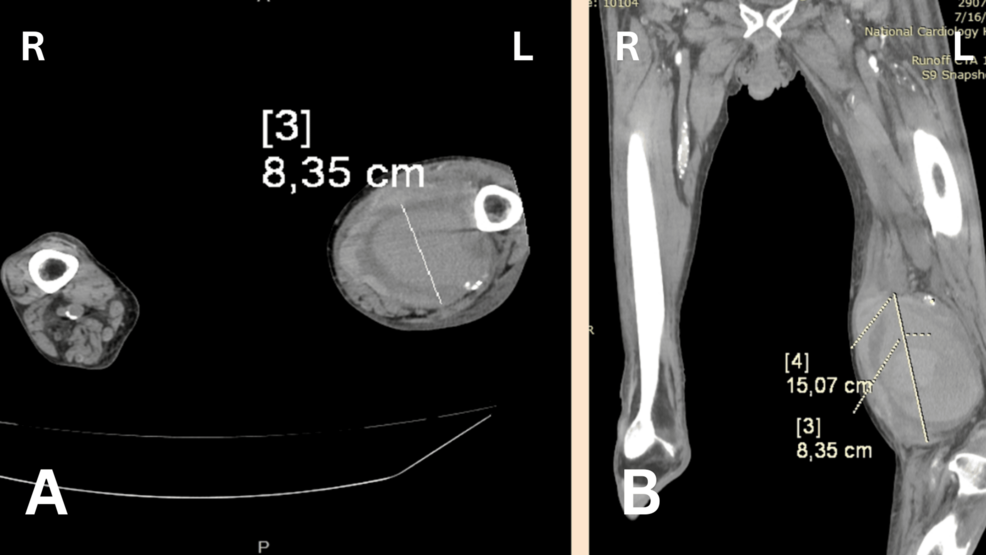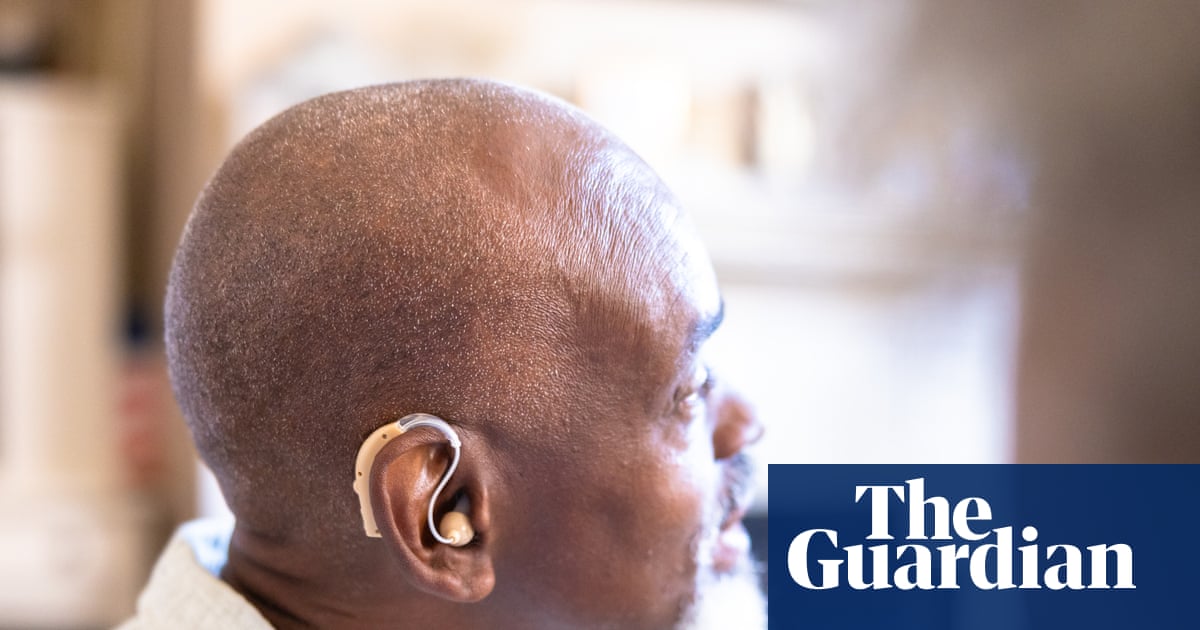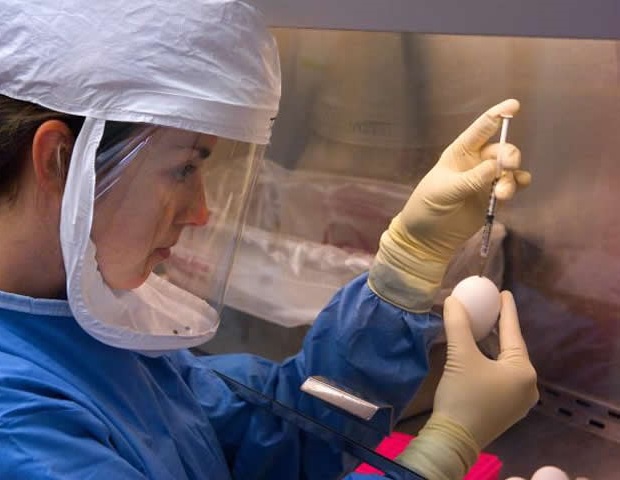Palmoplantar keratodermas is a chronic skin disease characterized by excessive thickening of the epidermis of palms and soles and it is secondary to many diseases.1 Any medication can potentially cause pseudoainhum disease. It is very difficult to cure palmoplantar keratoderma and patients with such a disease may have lifelong symptoms. Pseudoainhum is a condition characterized by the development of ring-shaped constriction or exhaustion around a digit.2 The pathological mechanism of pseudoainhum remains unclear and it is possibly related to infection, trauma, and congenital ectodermal defects.2 Furthermore, a small percentage of palmoplantar keratosis will eventually progress to pseudoainhum.3 Pseudoainhum is a condition that occurs as a secondary effect of various diseases or is caused by a congenital defect in the ectoderm. It presents symptoms similar to those of achondroplasia. The onset usually occurs as a painful horizontal fissure on the flexor side of the toe (finger) joint, followed by inflammation and ulceration. The lesion gradually deepens and expands, extending around the toe (finger) to form a ring-shaped contraction band. The ring-shaped end of the toe (finger) becomes edematous, cyanotic, and ulcerated, eventually falling off naturally.4
Here, we reported one case of palmoplantar keratodermas complicated by pseudoainhum, reviewed previous related literature, and summarized the clinical characteristics of palmoplantar keratodermas complicated by pseudoainhum so as to improve the cognition of such a disease and thereby avoid clinical missed diagnosis or misdiagnosis.
Case Data
A 43-year-old man who had developed diffuse plaques on both hands and feet for 10 years and ring-shaped constriction or exhaustion around the fifth digit of the right foot for 1 year was included in this case report. Ten years ago, the patient began to develop hypertrophic plaques with white debris on the surface on both hands, which gradually became worsened and spread to the palms of both hands and soles of both feet (Figure 1A and B). The patient used topical ointment by himself, but the specific drugs used were unknown. The topical ointment had no obvious effects and the disease frequently recurred. One year ago, the patient had ring-shaped constriction at the transverse striation of the interphalangeal joint in the distal fifth phalanx of the right foot and had intermittent pain. The flexion and extension of the fifth phalanx were restricted (Figure 2A–C). The patient was admitted to our hospital on March 21, 2022. The patient denied a previous history of hypertension, diabetes mellitus, hepatitis B, tuberculosis, and drug/food allergy. There was no similar medical history in his pedigree.
|
Figure 1 (A) Yellow-brown cuticular hypertrophy on both hands; (B) A photo of dorsum of both feet, with the fifth digit of the right foot narrowed.
|
 |
Figure 2 (A) The right foot presented ring-shaped constriction around the fifth digit and hypertrophic and globular toe. (B and C) is the enlarged version of the local detail image.
|
Physical examination: The patient developed well, was well-nourished, had normal intelligence, and no abnormality in head and hair. No abnormality was observed in each system. Skin examination: Diffuse hyperplastic yellow-brown plaques were observed in the palms of both hands and soles of both feet. Yellowish crusting formed on the plaques. There was much white debris on the surface lesions. The fifth phalanx of the right foot was ring-shaped and narrowed, and the toe was globular. Color Doppler ultrasound examination revealed arteriosclerosis and multiple small plaques in the right lower limb vessel. The deep vein of the right lower limb had smooth blood flow. An antero-posterior radiograph of the right foot showed constriction of the fifth phalanx (Figure 3A and B).
 |
Figure 3 (A) Antero-posterior radiographs of the right foot showed constriction of the fifth phalanx. “R” stands for the right side. (B) Expand the display of image details.
|
Laboratory examination revealed that anti-streptolysin O level was 48 IU/mL (reference range 0–200 IU/mL), uric acid level 230 µmol/L (reference range 140–420 µmol /mL), rheumatoid factor level 8 IU/mL (reference range 0–20 IU/mL), anti-cyclic citrullinated peptide antibody 12.34 U/mL (reference range 0–35 U/mL).
Diagnosis: The patient was diagnosed with palmoplantar keratodermas complicated by pseudoainhum.
Treatment: Acitretin capsule (20 mg p.o. q.d), dipyridamole tablet (25 mg p.o.t.i.d), vitamin E soft capsule (0.1 g p.o. t.i.d), and topical mucopolysaccharide polysulfate cream (p.o.b.i.d) were administered.
Discussion
Palmoplantar keratoderma, also known as keratosis palmaris et plantaris, is an autosomal dominant genetic disease characterized by excessive keratotic plaques in the friction areas such as palms and soles. It can be divided into more than 10 subtypes according to different clinical characteristics, including punctate, coin shaped, localized, diffuse, and mutilated, of which diffuse palmoplantar keratoderma is the most common.5 Palmoplantar keratoderma, as a chronic skin disease, is hardly cured. It is a lifelong disorder. Patients with mild palmoplantar keratoderma only showed rough palmoplantar skin, while most patients will have thickening and cuticle on both palmoplantar parts, erythema around the epidermis, and pain. Patients with severe palmoplantar keratoderma will have limited movement of the metacarpophalangeal joints, and those whose deck was involved may have cloudy deck, sweating, and other symptoms.6 Palmoplantar keratoderma mainly affects the finger joints and has little impact on the knee and elbow joints. Some patients may have congenital abnormalities such as pseudoainhum, skin pigment disorders, and ichthyosis. Palmoplantar keratoderma, palmoplantar pustulosis, and eczema tyloticum all have erythema and hyperkeratosis, which need to be identified through histopathological examination. Palmoplantar pustulosis has typical pustular symptoms. After the pustules subside, brown spots will be left, accompanied by skin scaling, while eczema tyloticum is often accompanied by itching and inflammation.7 Currently, surgical treatment is the preferred method for treating pseudoainhum disease, as it can release the constrictive bands around the affected fingers. Emollient cream, cuticle relaxant, and vitamin A capsule were mainly used to alleviate clinical symptoms of palmoplantar keratoderma, which can effectively inhibit the proliferation of keratinocytes, thereby relieving hyperkeratosis and delaying the progress of the disease.8
Ainhum, also known as dactylolysis spontanea, is a skin disorder accompanied by abnormal bone absorption of unknown causes.9 It mainly occurs in 30–40-year-old men. It predisposes to occur in subtropical and tropical regions. It has a high prevalence in dark-skinned people, such as populations in Africa and America.3 Its pathogenesis remains unclear. It may be related to the fact that people in tropical regions like to walk barefoot. In addition, its pathogenesis may be related to excessive fibrosis in the distal extremities, which are caused by sensory disorders, infection, trauma, and hyperkeratosis. Ainhum usually occurs in the toes, most common in the fifth toe. Most patients with ainhum suffered bilateral involvement. In the early stage of the disease, chapped skin and deep circular grooves develop, which progress to osteoporosis, bone deformation, ulceration, and swelling distal to circular grooves that are often secondary to infection or trauma, followed by spontaneous amputation 5–10 years later.10
The pathological manifestations of pseudoainhum disease are mostly characterized by excessive epidermal keratinization, with significantly thickened stratum corneum, thickened spinous layer, and thickened dermis. In the contraction zone, dense fibrous connective tissue resembling scar tissue is seen surrounding the blood vessels.11 Sometimes, there are coronal sheet-like and keratin layer depression, and punctate subtype features.11 The main difference in clinical diagnosis from diseases with excessive keratinization is through the characteristics of the skin lesions and the fibrotic band formation with hyperkeratosis observed in pseudoainhum disease.
Wells and Robinson12 classified constriction rings occurring in the limbs into four categories: a) ainhum-like band complicated by other diseases; b) congenital constriction band; c) secondary zone caused by trauma; d) ainhum. Neumann referred to the first three as “pseudoainhum” and differentiated them from ainhum.12 Congenital pseudoainhum occurs immediately after birth and it is easy to differentiate congenital pseudoainhum from ainhum, but it is difficult to differentiate pseudoainhum caused by infection or trauma from ainhum. Pseudoainhum is secondary to some hereditary (such as pachyonychia congenita, palmophalangeal keratoderma, pityriasis rubra) or non-hereditary diseases (cervical spondylosis, syphilis, scleroderma), or it is caused by congenital ectodermal defects, and it has similar clinical symptoms to ainhum.13
In addition, ainhum can be induced by mechanical damage, physical damage, chemical damage, burns, and other factors, resulting in limb annular constriction. Ainhum often initiates at the flexor side of the toe joint, and presents as painful transverse fissure, accompanied by ulcer or inflammation. With the progression of the disease, a circular constriction band appears, and finally it is naturally cut off.14
At present, diffuse palmoplantar keratoderma complicated by pseudoainhum is relatively rare in China. Porokeratosis,15 dermatomyositis,16 lichen planus17 have been reported to be complicated by pseudoainhum. In 2016, Mao et al18 reported one case of palmoplantar keratoderma complicated by pseudoainhum of the hand with bone destruction. In 2022, Song et al19 reported one case of Kindler-like epidermolysis bullosa complicated by pseudoainhum. The patient reported by Song et al19 presented with blisters repeatedly after birth, and then developed photosensitivity, skin atrophy, and abnormal pigment. After 10 years of age, hyperkeratosis of palms and soles and pseudoainhum of the little fingers of both hands gradually appeared. This patient first had diffuse palmoplantar keratoderma, which was characterized by diffuse hyperplastic yellow-brown plaques on the palms of both hands and soles of both feet. Yellowish crusting formed on the plaques. There was much white debris on the surface lesions. Later, the fifth phalanx of the right foot was gradually ring-shaped and narrowed, and the toe was globular. Therefore, this patient was diagnosed with palmoplantar keratodermas complicated by pseudoainhum.
Taken together, palmoplantar keratodermas complicated by pseudoainhum is relatively rare in clinical practice, and there is no effective treatment method. The patient included in this study has no other systemic diseases and has not undergone surgical treatment. He was temporarily treated with acitretin capsule, dipyridamole tablet, vitamin E soft capsule and apply mucopolysaccharide polysulfate cream topically to the affected area. However, long-term follow-up is still needed to observe the progression of the disease.
Ethical Informed Consent Statement
Written informed consent has been provided by the patient to have the case details and any accompanying images published. This case has been approved by the Fifth People’s Hospital of Hainan Province and can be made public.
Disclosure
The authors report no conflicts of interest in this work.
References
1. Huang C, Yang Y, Huang X, et al. Nagashima-type palmoplantar keratosis: clinical characteristics, genetic characterization, and clinical management. Biomed Res Int. 2021;2021(1):8841994. doi:10.1155/2021/8841994
2. Richey PM, Stone MS. Resolution of pseudoainhum with Acitretin therapy in a patient with palmoplantar keratoderma and congenital alopecia. JAAD Case Rep. 2019;5(3):219–221. doi:10.1016/j.jdcr.2018.12.004
3. Govender KC, Pillay S. Palmoplantar keratoderma, pseudo-ainhum and knuckle pads in an African patient: a case report. SAGE Open Med Case Rep. 2023;11:2050313X231204197. doi:10.1177/2050313X231204197
4. Baaniya B, Agrawal S. Exploring pseudoainhum in camisa syndrome. Clin Case Rep. 2021;9(10):e04995. doi:10.1002/ccr3.4995
5. He L, Chen H, Lin XF, et al. Research advances in epidermolytic palmoplantar keratoderma. Shiyong Pifubingxue Zazhi. 2021;14(2):88–90,94.
6. Lei XG, Xue LH, Zhang RL. Diffuse palmoplantar keratoderma: a pedigree report. Zhongguo Zhongxiyi Jiehe Pifu Xingbingxue Zazhi. 2014;13(2):121–122.
7. Xu YY, Yin G, Ding X, et al. A case of diffuse palmoplantar keratoderma complicated by pseudoainhum. Shiyong Pifubingxue Zazhi. 2020;13(5):316–317.
8. Sil A, Bhanja DB, Panigrahi A, et al. Palmoplantar keratosis and raindrop pigmentation in chronic arsenicosis. QJM. 2020;113(8):584–585. doi:10.1093/qjmed/hcz309
9. Wollina U, Tirant M, Vojvodic A, Lotti T, Lotti T. Unilateral pseudo-ainhum in liver cirrhosis. Open Access Maced J Med Sci. 2019;7(18):3013–3014. doi:10.3889/oamjms.2019.681
10. Zhou W, Zhang Z, Zhang J, et al. First report of Mal de Meleda with pseudo-ainhum treated with gabapentin in a 17-year-old Chinese girl. Australas J Dermatol. 2021;62(3):466–468. doi:10.1111/ajd.13625
11. Pickus EJ, Lionelli GT, McKinley ET, Lawrence WT, Witt PD. Digital constriction bands in pseudoainhum: morphological radiographic, and histological analysis. Ann Plast Surg. 2001;47(2):194–198. doi:10.1097/00000637-200108000-00016
12. Zhou Y, Xu ZJ, Xue RZ. One case of ainhum. Pifu Xingbing Zhenliaoxue Zazhi. 2021;28(6):472–475.
13. Liang HY, Zhen QY, Luo JS, et al. A case of erysipelas secondary to pseudo-ainhum. Linchuang Pifuke Zazhi. 2016;45(6):460–461.
14. Singh K, Crum OM, Davis DMR, et al. Surgical management of pseudoainhum in loricrin keratoderma. JAAD Case Rep. 2020;6(10):1012–1015. doi:10.1016/j.jdcr.2020.07.029
15. Wei B, Liu M, Qu L, et al. Congenital linear porokeratosis with pseudoainhum. Eur J Dermatol. 2010;20(6):817–818. doi:10.1684/ejd.2010.1068
16. Su YM, Wang WL, Yang RY, et al. One case of dermatomyositis with pseudoainhum. Linchuang Pifuke Zazhi. 2006;35(2):89.
17. Luo Y, Xia G, Yan HB. Lichen planus caused pseudoainhum. Linchuang Pifuke Zazhi. 2017;46(2):121–122.
18. Mao BY, Li L, Tang W. A case of palmoplantar keratoderma complicated by pseudoainhum of the hand. Zhonghua Shouwaike Zazhi. 2020;36(6):448–449.
19. Song DY, Geng J, Li ZT, et al. A case of Kindler-type epidermolysis bullosa complicated by pseudoainhum. Zhongguo Pifu Xingbingxue Zazhi. 2022;36(7):819–823.











